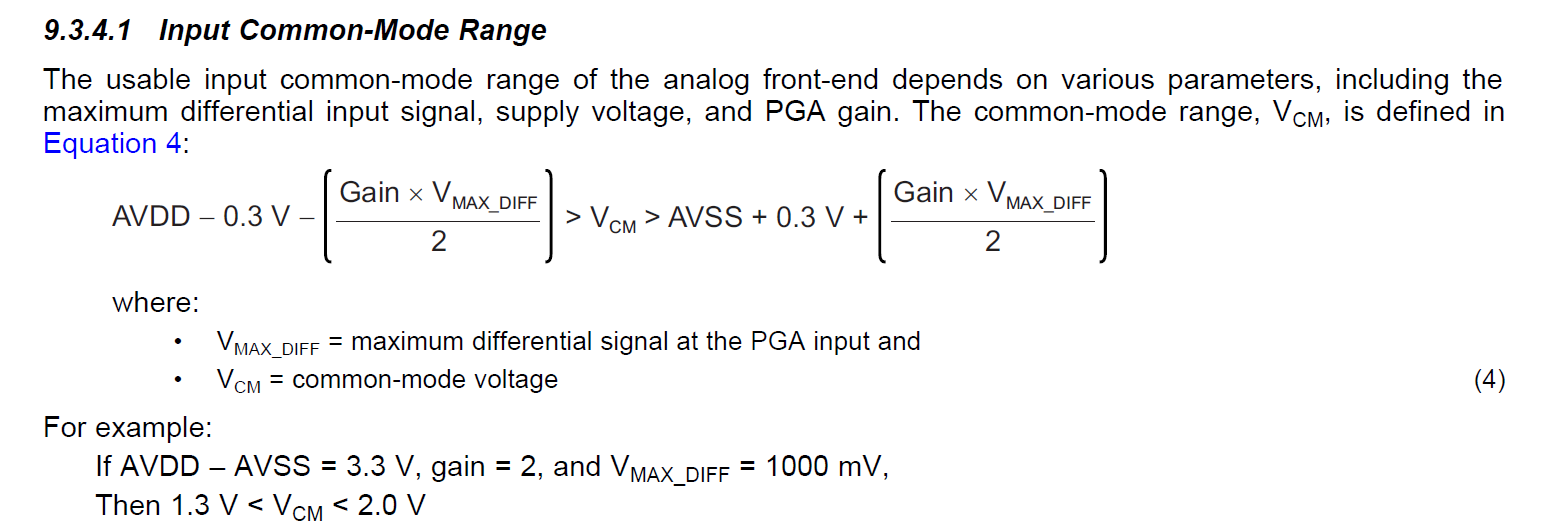Other Parts Discussed in Thread: ADS131E08, STRIKE
Hi Expert,
I am using ADS131M08 and can you make me clear about below questions?
1. I didn't find the Vcm range of ADS131M08 in datasheet, what is the Vcm range of this device?
2.I am also considering ADS131E08, and luckily I found a detailed Vcm range description, is ADS131M08 Vcm range same as E08 or not?
3.In my opinion, Vcm = (VINxP + VINxN) / 2, but the definition for Vcm of ADS131E08 is different, see below datasheet description(says Vcm = (VINxP - VINxN) / 2), is it a typo in datasheet?
4.Can I float the GND of ADS131M08 in a differential mode sample input? Is there any potential risk in EMC test if I use floating ADS131M08 GND ?
Thank you.
Rachel




